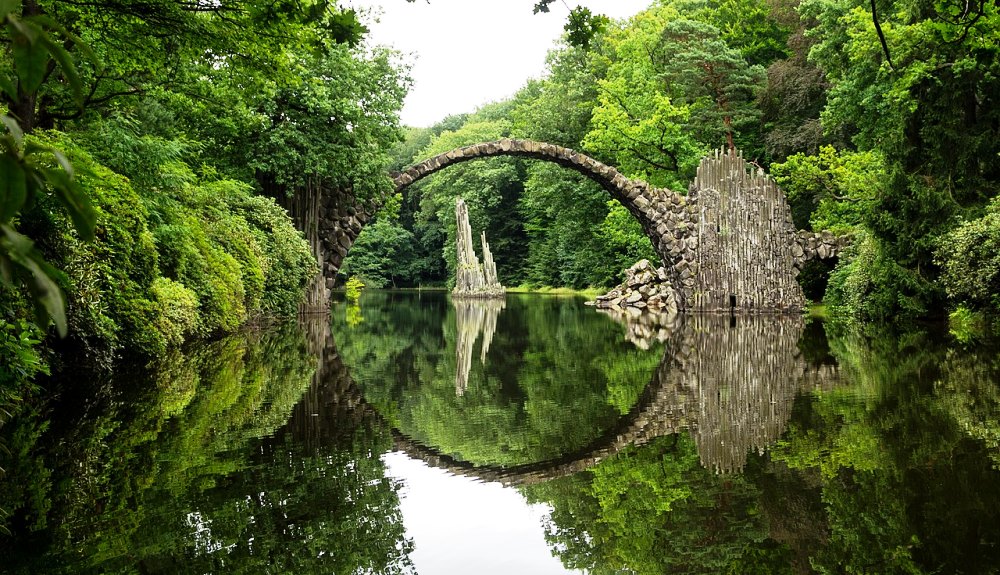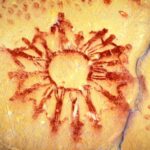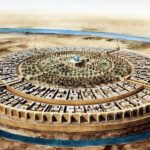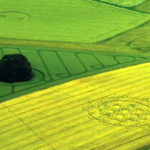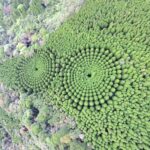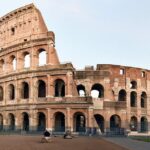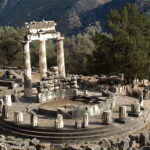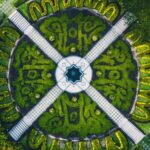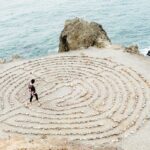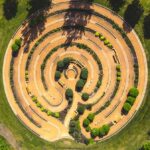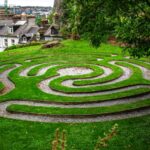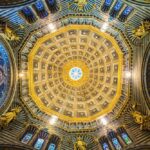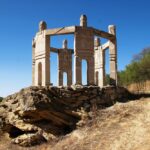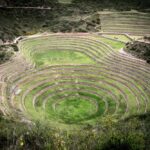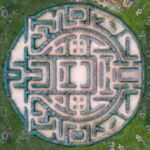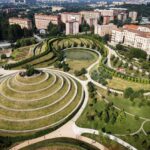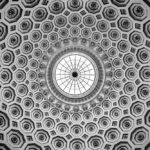There is something about the Rakotzbrück in Gablenz, Germany’s Kromlauer Park that makes it special. Surrounded by verdant foliage, the delicately arched bridge was designed to be one-half of a perfect circle so that when the water it crosses is still and the light is right, the bridge creates the illusion of a complete stone circle.
What’s special about the Rakotzbrücke is its circle. If you stare at it long enough, you can almost feel the magic.
“A circle is the longest distance to same point.” —Tom Stoppard
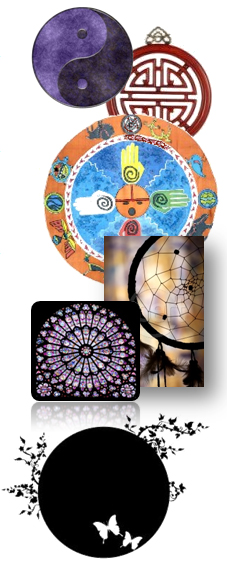
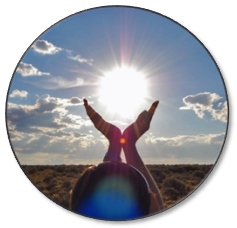 Circles are round geometric shapes without corners. They have no beginning, no end.
Circles are round geometric shapes without corners. They have no beginning, no end.
In just about every culture, circles are sacred symbols representing eternity, infinity, wholeness, balance, unity, divinity, and the universe.
Circles appear in all aspects of life—the celestial circles we call earth, sun, and moon . . . the common circular objects we live with on a daily basis, like steering wheels, clock faces, and slices of round fruit . . . as well as the conceptual circles of family, friends, community, and life itself.
 The Circle of Life, sometimes called ensō in Zen, represents the continuous cycle of birth, living, death, and rebirth. It is a spiritual concept, symbolic of our journey from cradle to grave, reminding us that nothing truly dies—it just takes on form in another way, continuing to exist in some capacity forever.
The Circle of Life, sometimes called ensō in Zen, represents the continuous cycle of birth, living, death, and rebirth. It is a spiritual concept, symbolic of our journey from cradle to grave, reminding us that nothing truly dies—it just takes on form in another way, continuing to exist in some capacity forever.
“Life is a circle. The end of one journey is the beginning of the next.” —Joseph M. Marshall III
Circles have been around since before the beginning of recorded history. The earliest civilizations used circles to convey messages and ideas. Prehistoric people made stone and timber circles—like those at Stonehenge—and circular elements are common in petroglyphs and cave paintings.

The ancient circular structure, Stonehenge, on Salisbury Plain in Wiltshire, England was constructed about 5,000 years ago
Circles exist in the rose windows of cathedrals and other forms of sacred art. They have been explored and developed to an exceptional degree in Buddhist, Tibetan, and Indian cultures, and they are widely used in Native American rituals, dreamcatchers, mandelas, and medicine wheels.
By tradition, the images are drawn, painted, modeled (as in sand sculpture) and even danced (as in the North American Hoop Dance, which represents the eternal circle of life and is used for healing).
Interesting circles found around the world
Photos from around the world:
Perdana Botanical Gardens, Malaysia by Deva Darshan on Unsplash.
Beach maze by Ashley Batz on Unsplash.
Carol Shields Memorial Labyrinth by Brydon McCluskey on Unsplash.
Cathedral of the Armed forces by Dmitry Bogatyrev on Unsplash.
Labyrinth at St. Fin Barre’s Cathedral by Fabrício Severo on Unsplash.
Duomo di Siena by David Siglin on Unsplash.
Hora Haiducilor de la Bravicea, Călărași by Maria Lupan on Unsplash.
Moray in Peru by Willian Justen de Vasconcellos on Unsplash.
Spiral staircase of the Phare de Baleines lighthouse on the Ile de Re island, France by Nicolas Hoizey on Unsplash.
London Eye by Jack B on Unsplash.
Parque Juan Carlos I Hedge maze by Victor on Unsplash.
Setia Ecohill Park Roundabout by Firdouss Ross on Unsplash.
